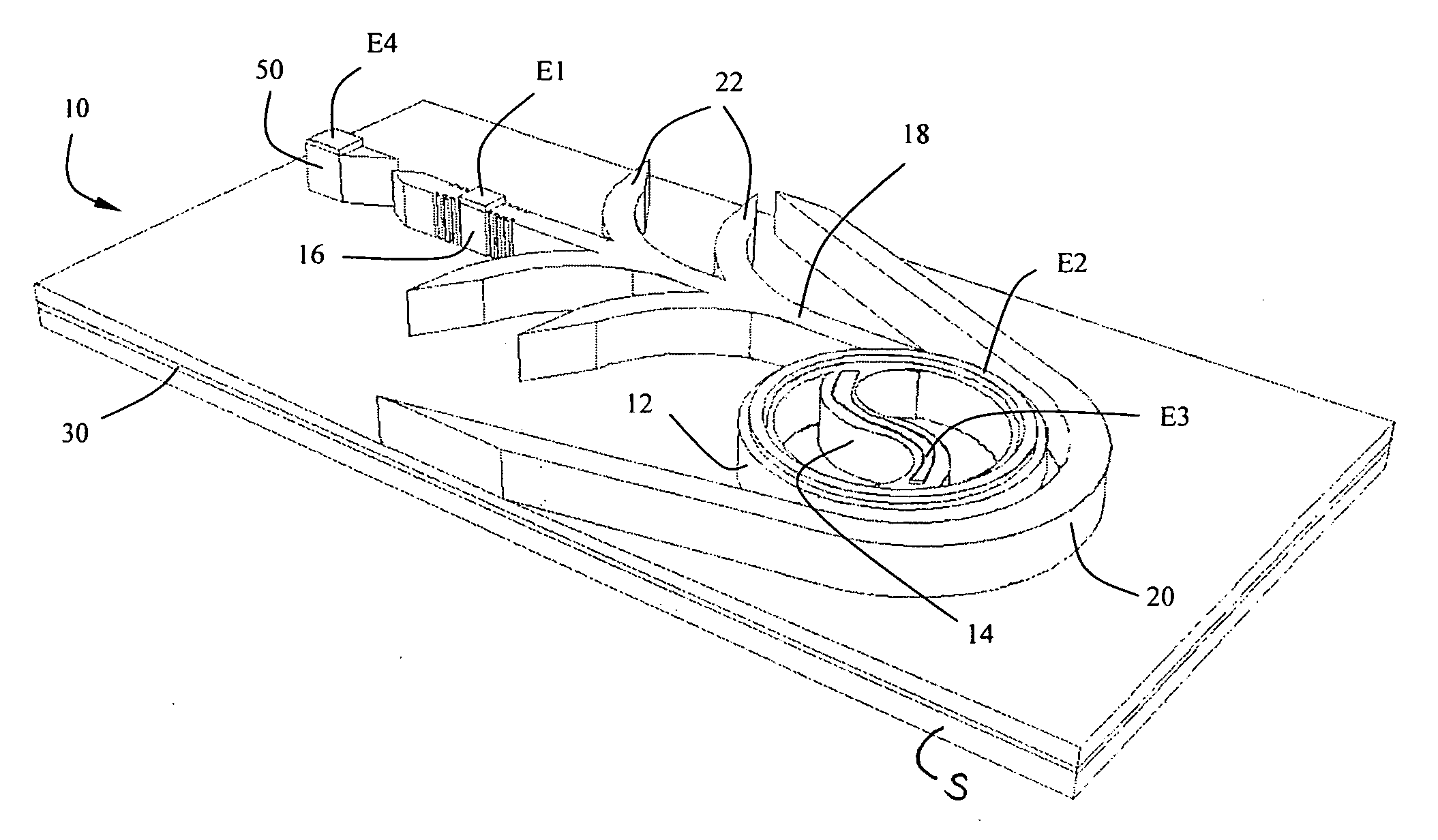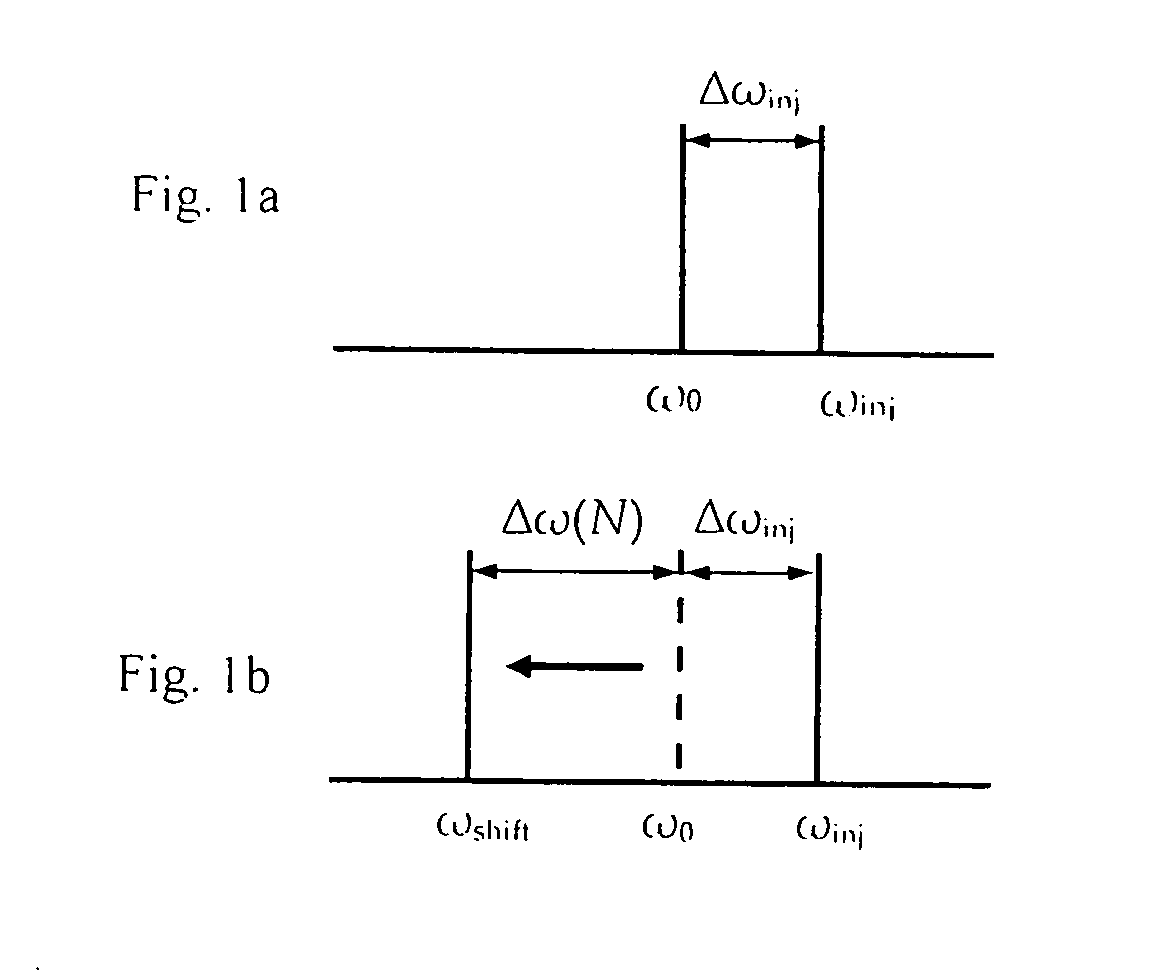Light-emitting device having injection-lockable semiconductor ring laser monolithically integrated with master laser
a semiconductor ring laser and monolithic integration technology, applied in semiconductor lasers, laser optical resonator construction, laser details, etc., can solve the problems of poor sensitivity of linbosub>3/sub>modulators, unattractive high half, etc., and achieve the effect of convenient use in practi
- Summary
- Abstract
- Description
- Claims
- Application Information
AI Technical Summary
Benefits of technology
Problems solved by technology
Method used
Image
Examples
Embodiment Construction
[0024]As shown in FIG. 2, an embodiment of the present invention provides a semiconductor light-emitting device 10 having a unidirectional semiconductor ring laser (USRL) section 12 monolithically integrated with a high-power semiconductor distributed Bragg reflector (DBR) (alternatively, distributed feedback, DFB) laser section 16 in a manner that can provide an injection locking mode of operation of the USRL section (slave laser) by injecting light from the DBR (DFB) laser section (master laser) wherein the slave laser section is substantially locked to the same frequency as the master laser section and wherein a significant increase in modulation bandwidth is thereby provided. The above integration thus can result in a low-cost, ultrafast (over 100 GHz) functional optical light-emitting transmitter.
[0025]Use of a unidirectional semiconductor ring laser (USRL) section as a slave laser in practice of the invention is advantageous to provide minimal back reflections (eliminating the...
PUM
 Login to View More
Login to View More Abstract
Description
Claims
Application Information
 Login to View More
Login to View More - R&D
- Intellectual Property
- Life Sciences
- Materials
- Tech Scout
- Unparalleled Data Quality
- Higher Quality Content
- 60% Fewer Hallucinations
Browse by: Latest US Patents, China's latest patents, Technical Efficacy Thesaurus, Application Domain, Technology Topic, Popular Technical Reports.
© 2025 PatSnap. All rights reserved.Legal|Privacy policy|Modern Slavery Act Transparency Statement|Sitemap|About US| Contact US: help@patsnap.com



